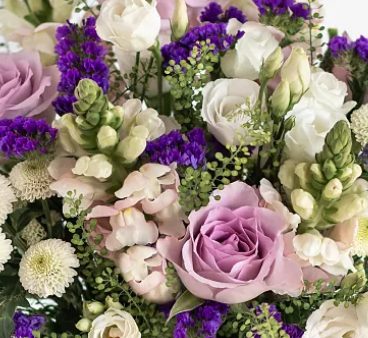
Fragrant Summer Flowers: Scented Beauties for Your Garden
As the warm days of summer unfold, there’s nothing quite like being enveloped in the sweet fragrance of blooming flowers. While visual appeal is undoubtedly important in a garden, adding flowers that tantalize the sense of smell can elevate the sensory experience to new heights. In this guide, we’ll explore some of the most delightful scented beauties that will not only add beauty to your garden but also fill the air with their enchanting scents.
Why Choose Fragrant Flowers?
These scented beauties have a unique ability to evoke memories, lift moods, and create a sense of tranquility and well-being. Adding scented blooms to your garden can transform it into a sensory oasis, inviting you to pause, breathe deeply, and savor the delightful aromas. Whether you’re enjoying a leisurely stroll through your garden, relaxing on a sunny afternoon, or entertaining guests outdoors, fragrant flowers add an extra layer of sensory delight that enhances the overall experience.
Captivating Fragrant Flowers for Summer
1. Roses (Rosa spp.)
Description: Roses are renowned for their intoxicating fragrance, which varies depending on the variety and color. Some roses have a sweet, fruity scent, while others have a spicy, musky aroma. Popular fragrant rose varieties include ‘Madame Isaac Pereire,’ ‘Gertrude Jekyll,’ and ‘Mr. Lincoln.’
Growing Tips: Plant roses in a sunny location with well-drained soil. Water regularly and fertilize with a balanced fertilizer to promote healthy growth and abundant flowering.
2. Jasmine (Jasminum spp.)
Description: Jasmine is prized for its delicate white flowers and sweet, floral fragrance. Common jasmine (Jasminum officinale) and star jasmine (Trachelospermum jasminoides) are popular varieties known for their enchanting scent.
Growing Tips: Plant jasmine in a sunny to partially shaded location with fertile, well-drained soil. Provide support for climbing varieties and water regularly, especially during hot, dry weather.
3. Lavender (Lavandula spp.)
Description: Lavender is celebrated for its soothing fragrance and aromatic foliage. The flowers range in color from shades of purple and blue to pink and white, and emit a calming, herbal scent that is beloved by humans and pollinators alike.
Growing Tips: Plant lavender in a sunny location with well-drained, alkaline soil. Water sparingly once established, as lavender is drought-tolerant, and prune lightly after flowering to promote bushy growth.
4. Gardenias (Gardenia spp.)
Description: Gardenias are prized for their creamy white flowers and rich, intoxicating fragrance. The flowers are often used in perfumes and cosmetics for their sweet, floral scent, which can fill an entire garden with its heady aroma.
Growing Tips: Plant gardenias in a partially shaded location with rich, acidic soil. Keep the soil consistently moist but not waterlogged, and protect from strong winds and frost.
5. Sweet Peas (Lathyrus odoratus)
Description: Sweet peas are beloved for their delicate, pastel-colored flowers and sweet, floral fragrance. These scented beauties come in a wide range of colors, including pink, purple, blue, and white, and emit a delightful scent that is reminiscent of honey and orange blossoms.
Growing Tips: Plant sweet peas in a sunny location with fertile, well-drained soil. Provide support for climbing varieties and water regularly to keep the soil evenly moist.
Incorporating Fragrant Flowers Into Your Garden
1. Designate a Fragrance Garden:
Create a dedicated “fragrance garden” in your yard or patio where you can plant an assortment of fragrant flowers. Arrange the flowers strategically to maximize their scent, and include seating areas where you can sit and enjoy the aromas.
2. Plant Along Pathways:
Line garden pathways, walkways, or entryways with fragrant flowers to greet visitors with their delightful scents. Consider planting low-growing varieties like lavender or sweet alyssum along the edges of paths for easy access.
3. Mix with Non-Fragrant Flowers:
Combine fragrant flowers with non-fragrant blooms to create dynamic and visually appealing garden beds or containers. Mix and match colors, shapes, and textures to create a balanced and harmonious composition.
4. Bring Indoors:
Cut fragrant flowers and bring them indoors to enjoy their scent throughout your home. Place them in vases or floral arrangements in high-traffic areas like the living room, kitchen, or bedroom to fill the space with their delightful fragrance.
5. Create a Night Garden:
Plant fragrant flowers that bloom at night, such as jasmine or night-blooming cereus, to create a “night garden” that comes alive after dark. Arrange seating areas or outdoor lounges where you can relax and enjoy the scents under the moonlight.
Adding fragrant flowers to your garden not only enhances its beauty but also engages the senses in a delightful olfactory experience. Whether you prefer the sweet scent of roses, the floral fragrance of jasmine, or the herbal aroma of lavender, there are plenty of fragrant flowers to choose from to suit your taste and preferences. So, surround yourself with the enchanting scents of summer flowers, and let your garden become a sanctuary of sensory delight and natural beauty.
